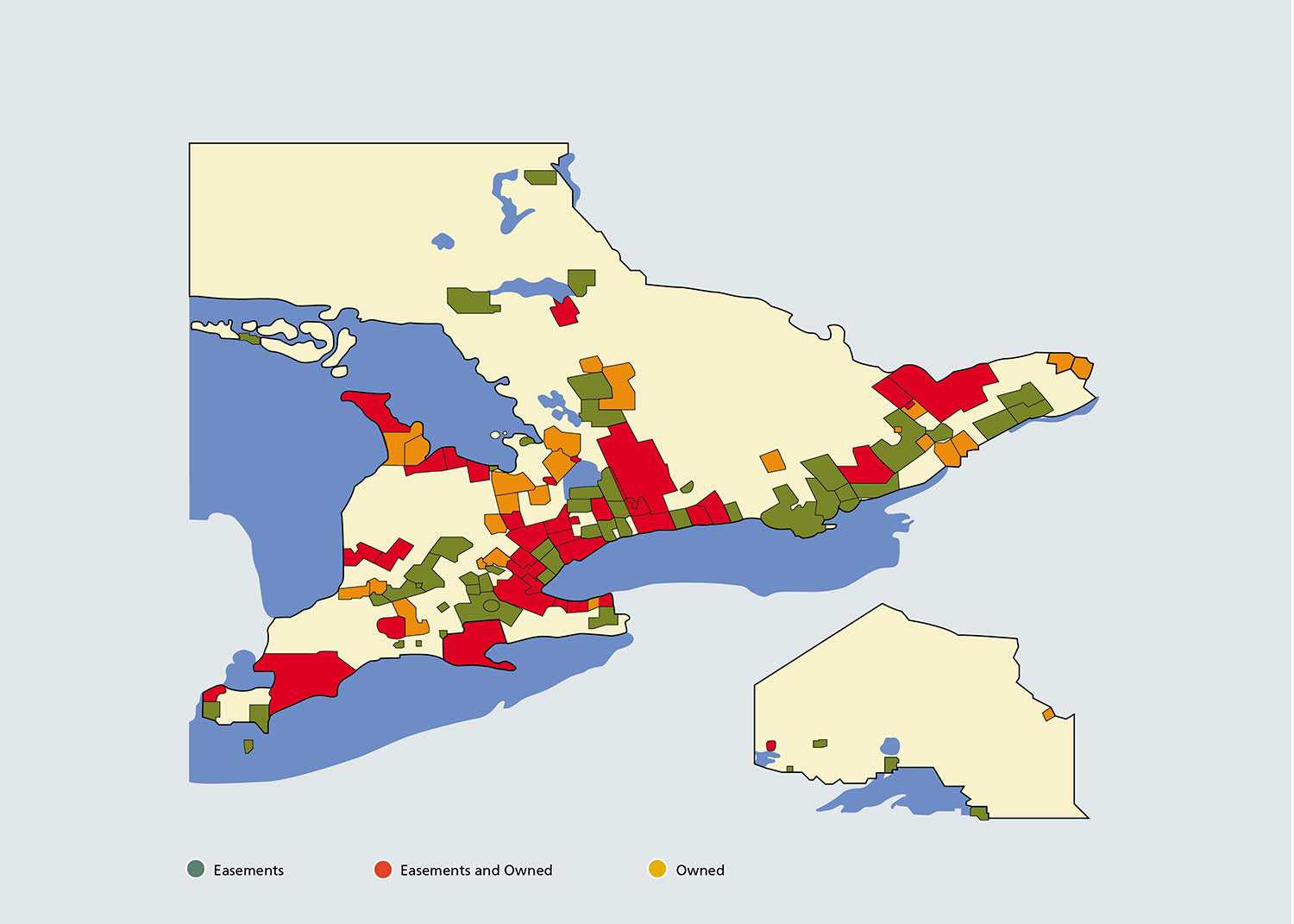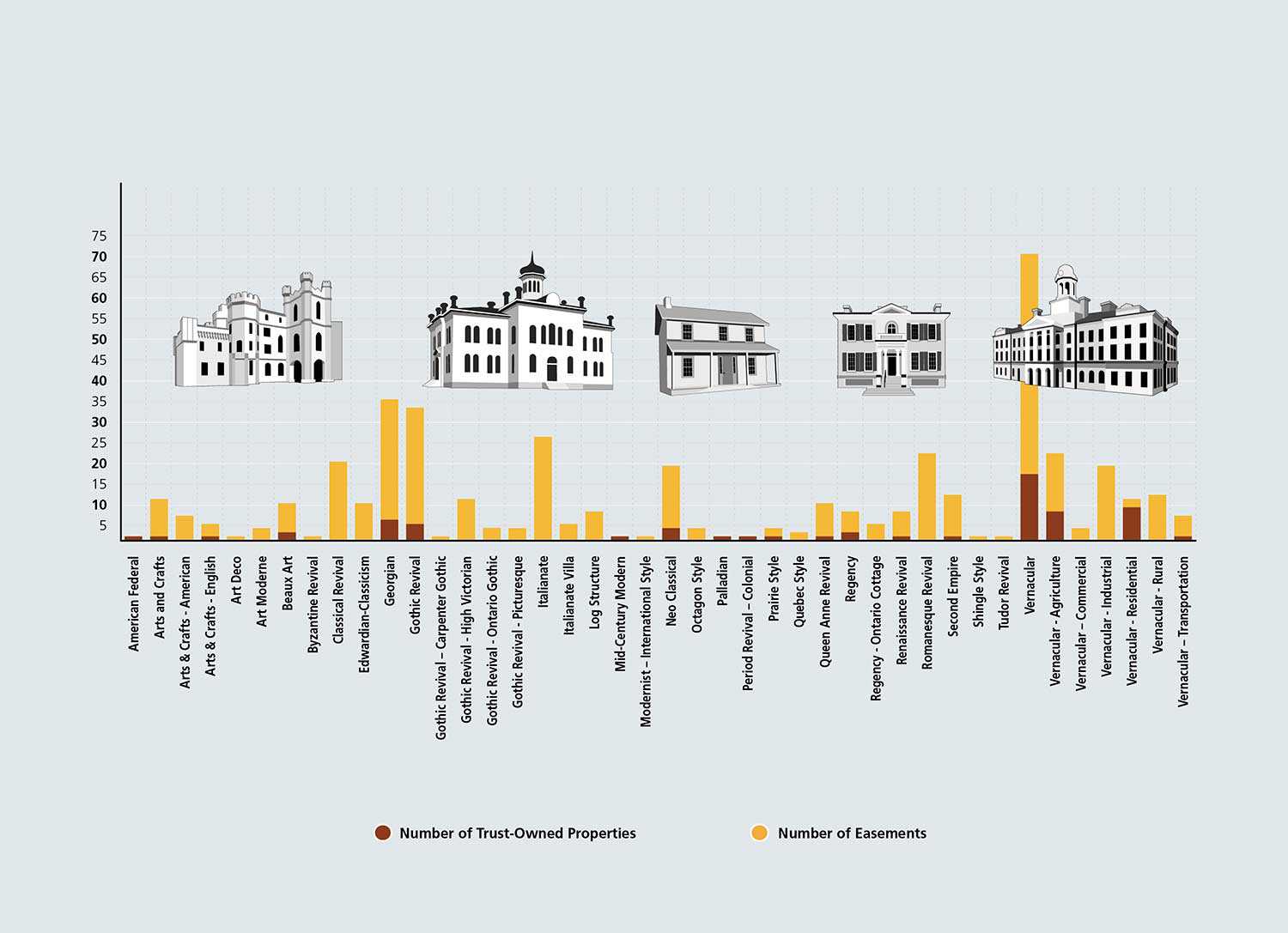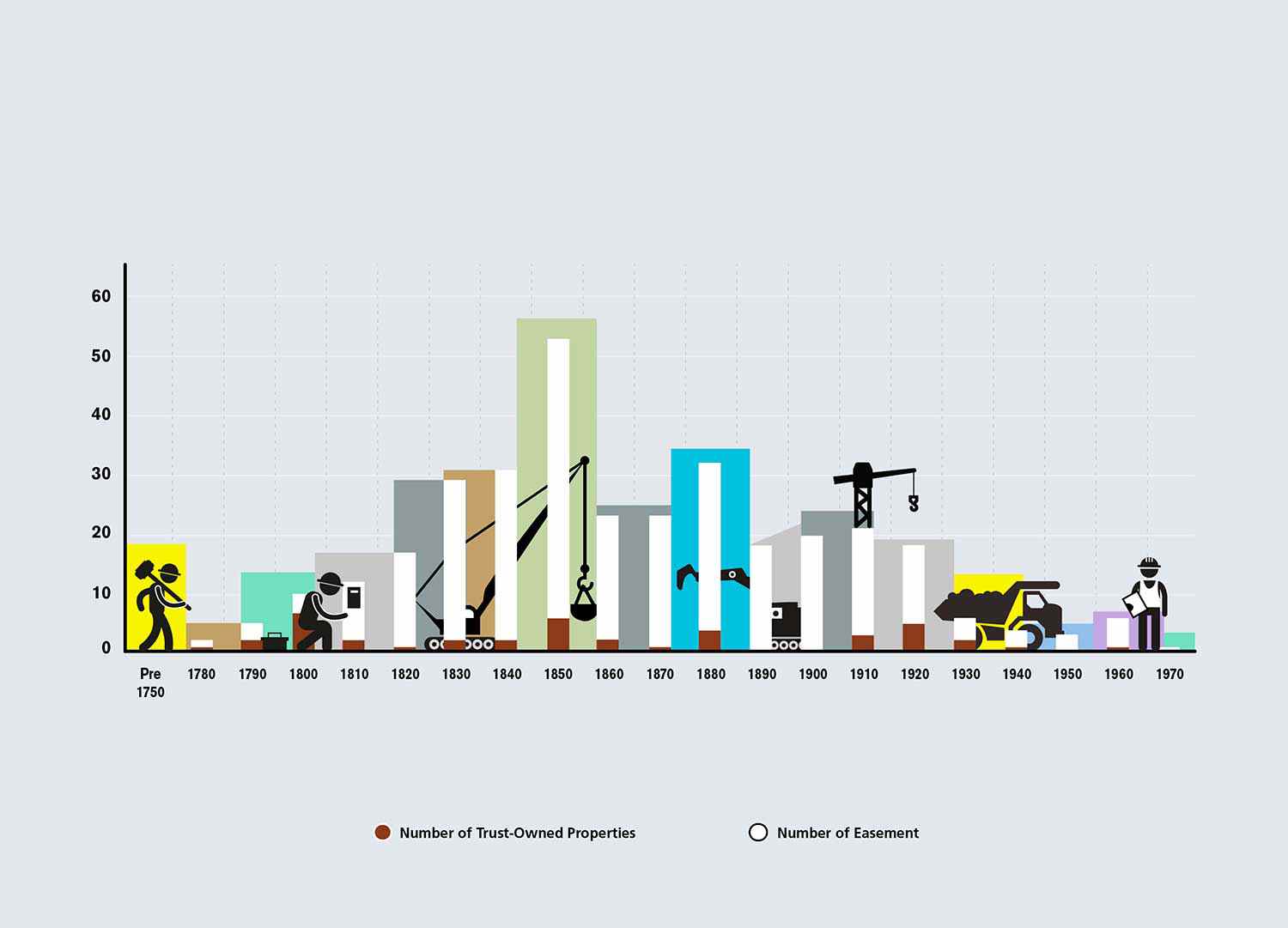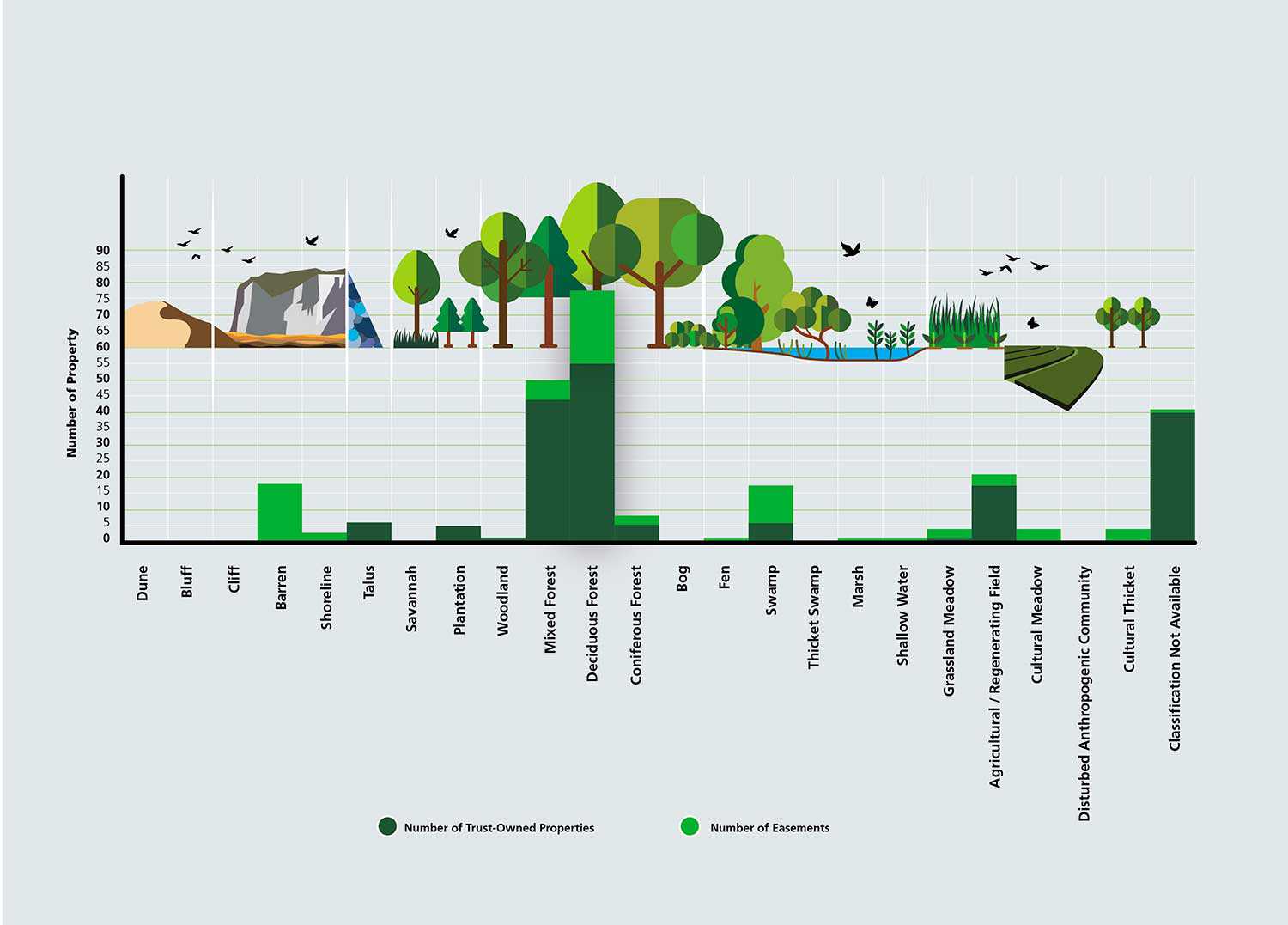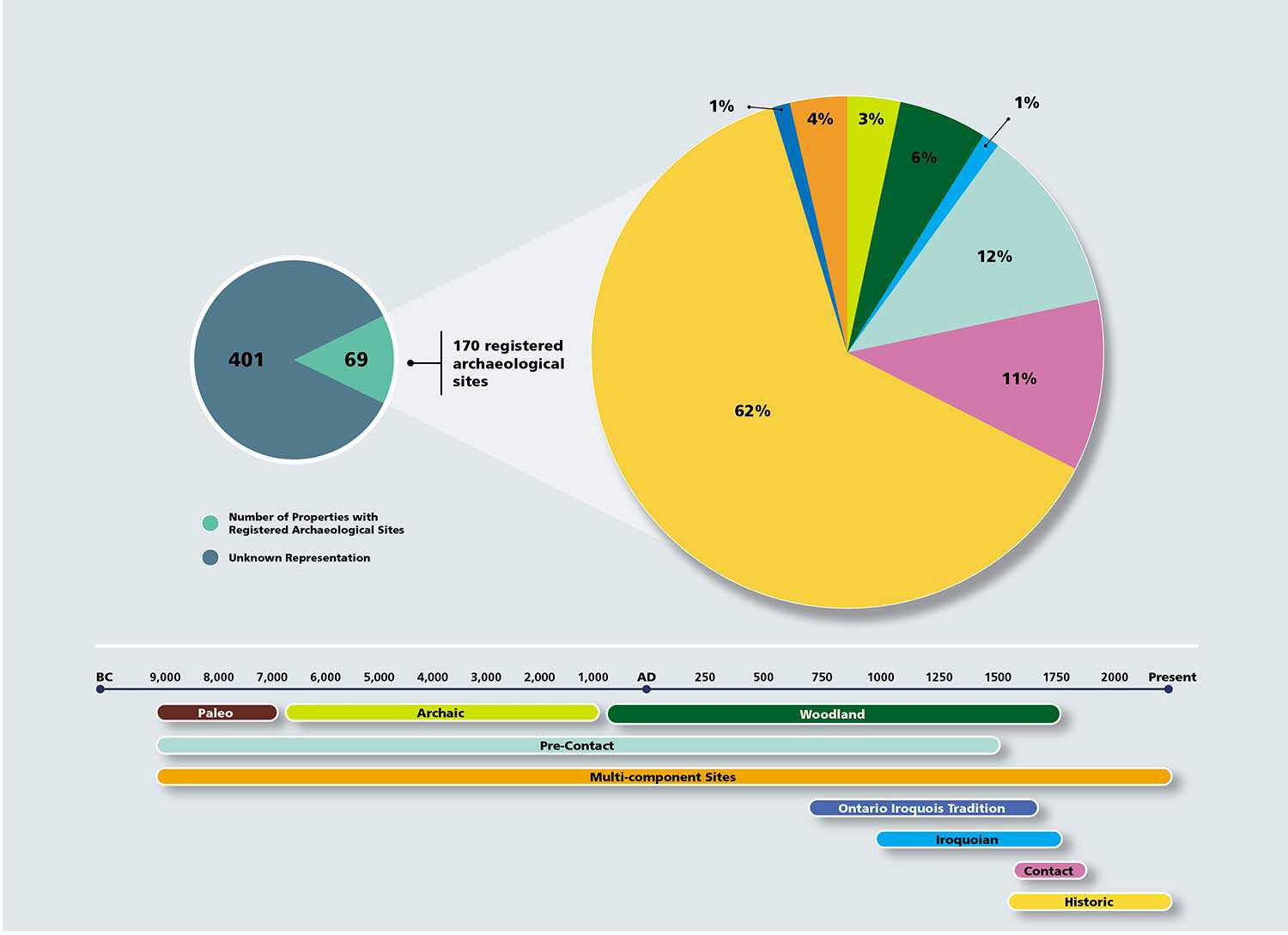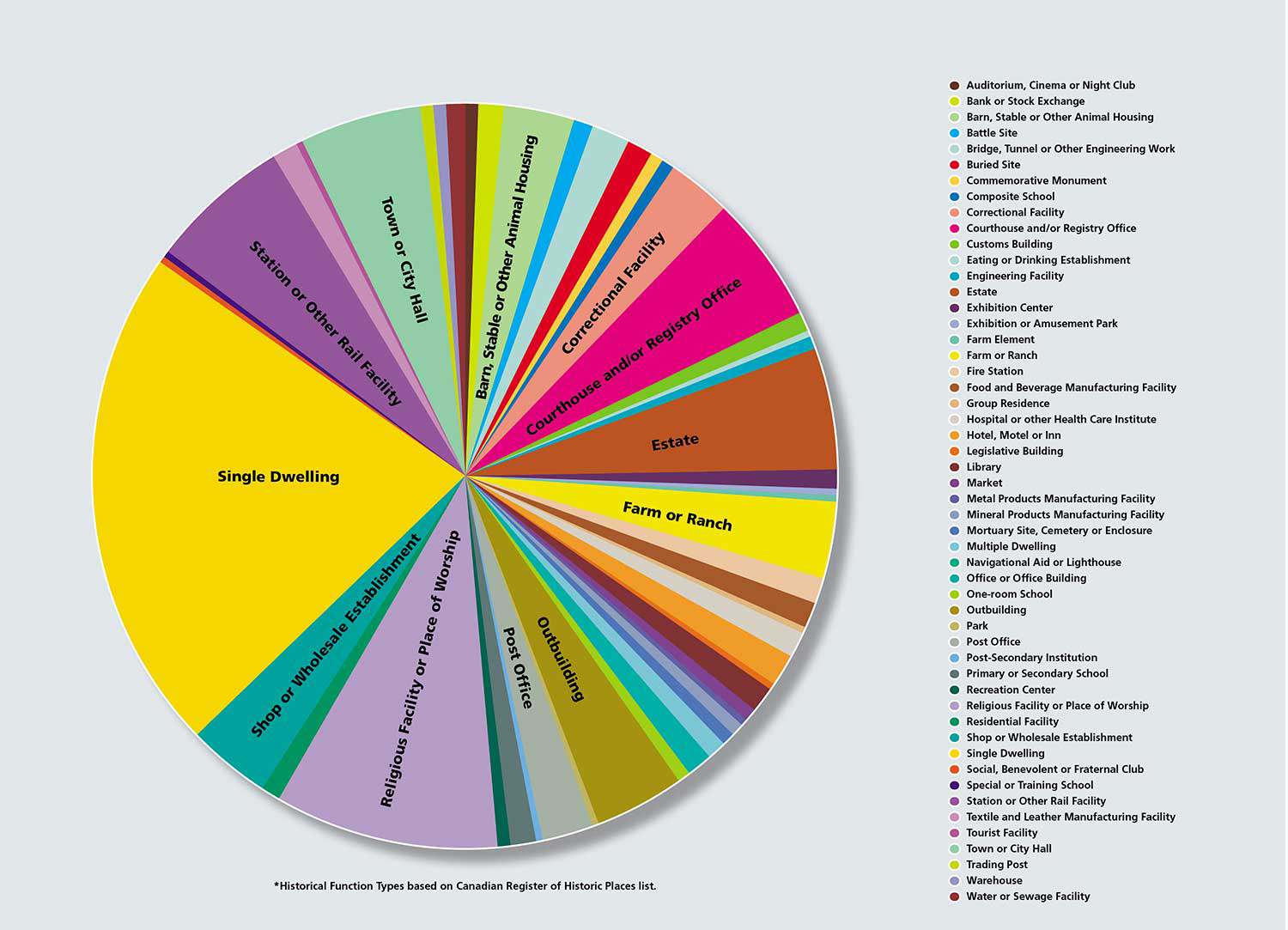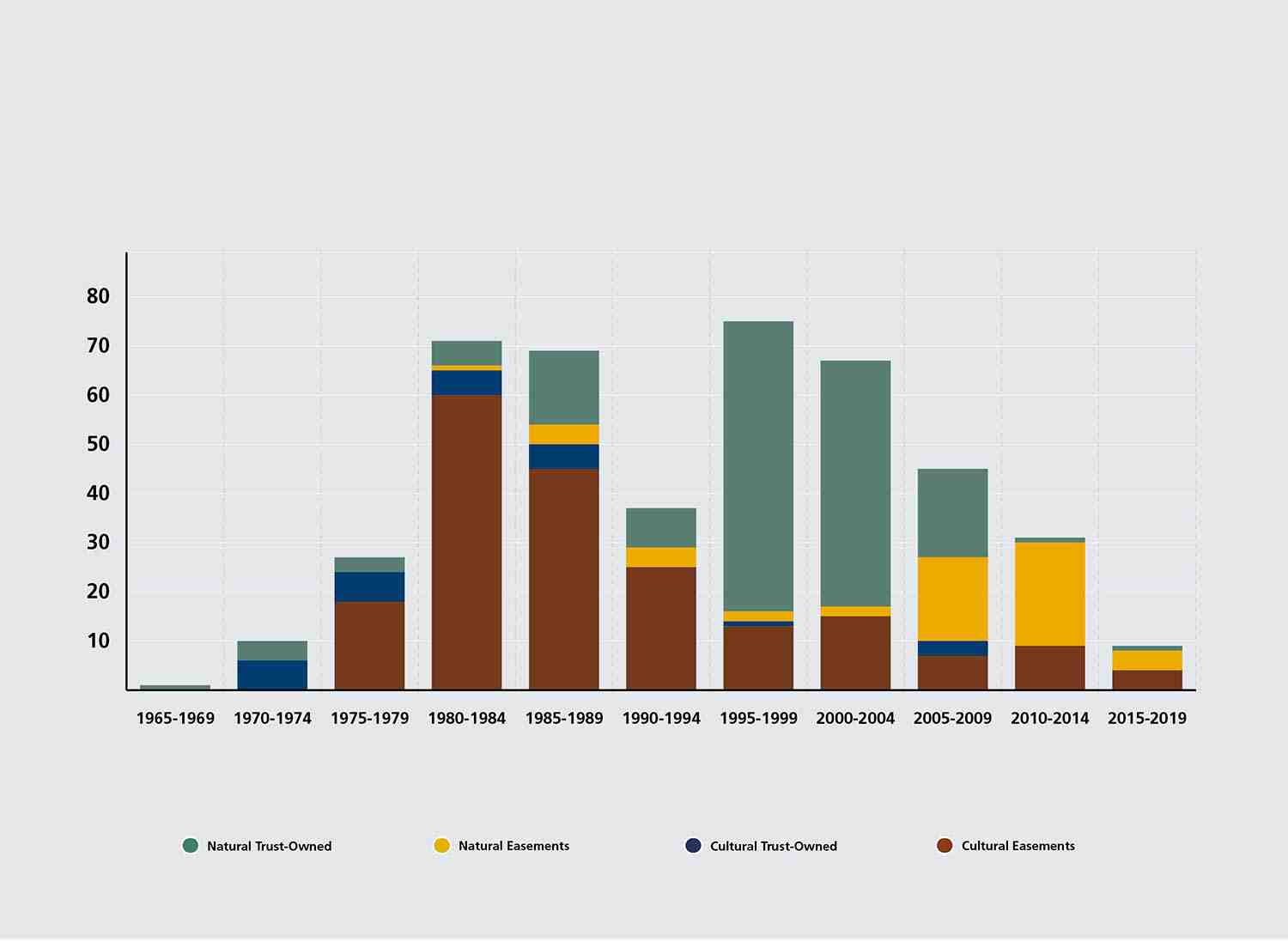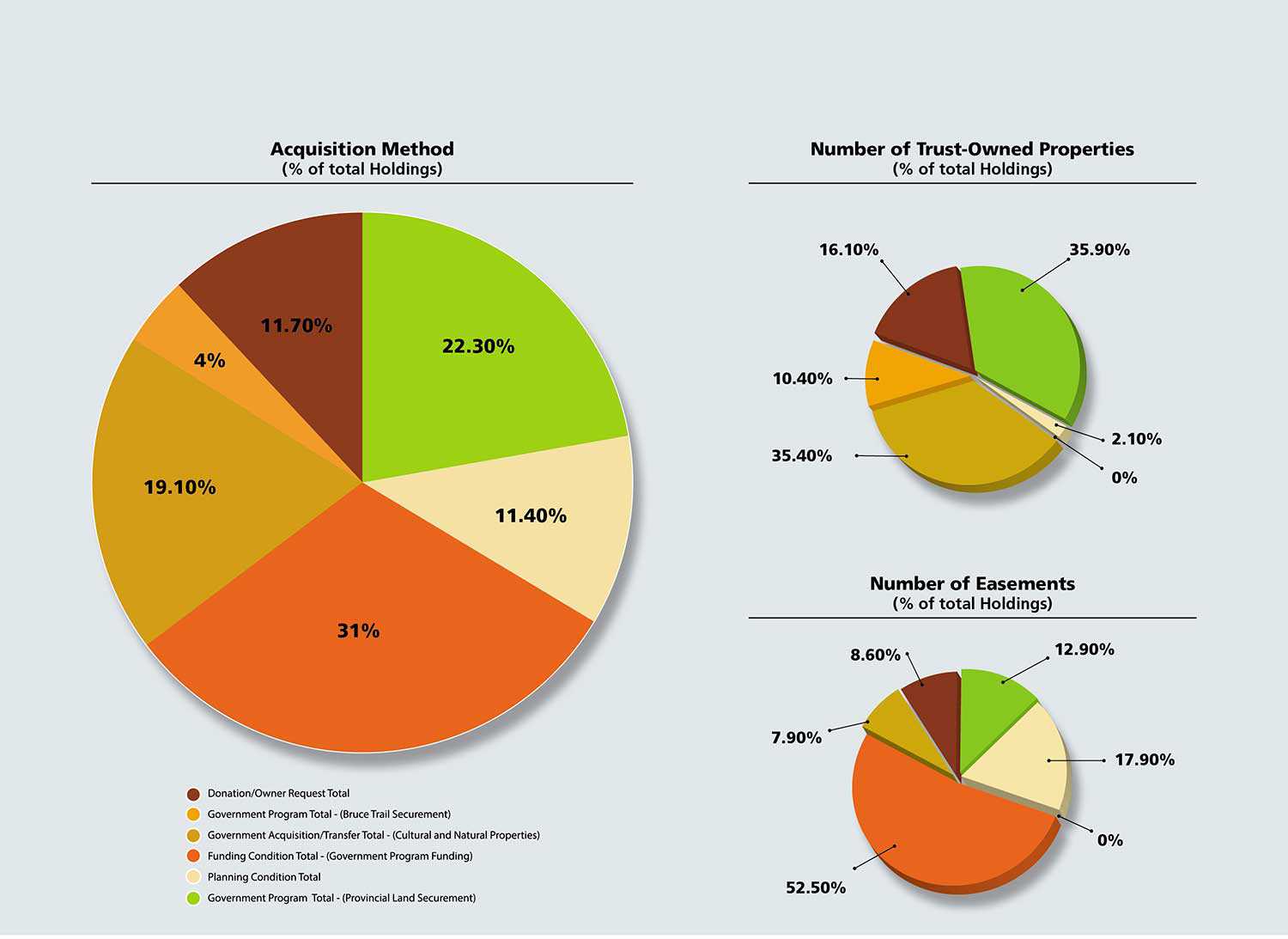Menu
What the data shows
The review of the Trust’s property portfolio provided the Trust with a detailed and accurate understanding of the portfolio’s strengths, where property typologies are underrepresented, and where gaps exist. It also provided insight on why, when and how the Trust obtained properties over time.
The following graphics summarize and highlight some of the information obtained in this review.
Trust property distribution across Ontario
The Trust protects properties all over the province, connecting with the municipalities where millions of Ontarians live and work.
Architectural styles: Cultural properties
The architectural styles within Trust cultural holdings show a breadth of styles and eras, though some styles dominate (including vernacular, Georgian and Gothic).
Dates of construction: Cultural properties
The Trust’s portfolio includes some of the oldest buildings in Ontario, ranging from the late 1700s through to the late 20th century. The greatest number of properties were built in the mid-19th century. The current portfolio includes few post-1945 modern buildings.
Dominant vegetation communities at natural heritage sites
The Trust has a wide variety of vegetation community groups under protection, but some are vastly underrepresented – including fens, bogs and cliffs. Mixed and deciduous forests dominate.
Archaeology typologies
170 of the Trust’s properties contain known archaeological sites. Many more have archaeological potential that has not yet been explored.
Historical function of Trust properties
The Trust’s property portfolio includes buildings that have served a wide variety of public and private functions in their communities over time. This speaks to the existing diversity within the portfolio. The largest single type is single-unit dwellings.
Partnerships
The Trust manages properties in partnership with a variety of organizations, groups and individuals. These partnerships are critical to the conservation of every single building and piece of land in the Trust’s portfolio. Municipalities and conservation authorities are some of the most common partnerships the Trust has.
Acquisition dates
Much of the Trust’s cultural and natural heritage portfolio was acquired when there were government funding programs available. This helped leverage public money for the conservation of provincially significant sites and represents important public investments in conservation. Many properties have also been donated by private individuals or organizations.
Acquisition methods
The Trust has acquired properties in different ways over many decades, with a significant number of sites coming to the Trust through government-funded programs. These strategic investments leveraged public dollars for conservation and brought a wide range of sites into Trust protection.


